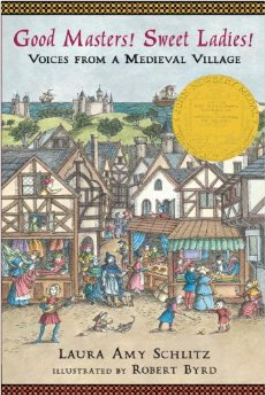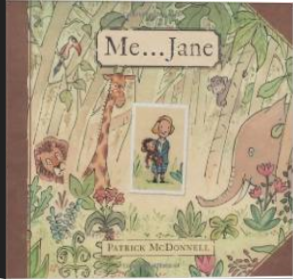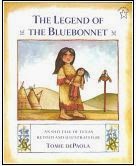Sweet, M. (2011).
Balloons Over Broadway: The True Story of the Puppeteer of Macy's Parade. NY:Houghton
Balloons Over Broadway is the story of Tony Sarg, a puppeteer for the Macy's parade. It begins with describing his life growing up and how he became interested in creating and manipulating marionettes. The book continues to detail how his career progressed from his marionettes on Broadway to his giant balloons in the Macy's parade.
Great lesson ideas and resources:
Bartoletti, S. (2005). Hitler Youth. NY: Scholastic.
This is a chilling tale about the young adults that followed Hitler in a group called the Hitler Youth. It begins with a description of Hitler's rise to power and the development of the Hitler Youth organization.
Hitler Youth includes information on several young people that were associated with the Hitler Youth organization as well as many black and white photographs from the era.
Great lesson ideas and resources:
Bragg, G. (2011). How They Croaked: The Awful Ends of the Awfully Famous. NY: Walker
How They Croaked is a very unique and interesting informational text. It details the gory truths and awful ends to some very famous people in history, such as George Washington and Albert Einstein. The information is written in a very interesting and funny way that doesn't throw a lot of facts at you, but definitely entertains you.
Great Lesson ideas and resources:
Harris, R. (1999). It's So Amazing. Boston, MA: Candlewick Press.
This book has comic-book-style artwork to help describe puberty and how a baby is made. It is written and illustrated in a way that makes it easy for a younger child to understand their bodies, sex, and the changes that will occur.
Great lesson ideas and resources:
McDonnell, P. (2011). Me...Jane. NY: Little, Brown Books for Young Readers.
Me...Jane is a very clever informational book about Jane Goodall. It tells the story of her growing up and her love of animals. It describes how she believed the world was magical and how she set out to discover it at a very young age. The book ends with Jane accomplishing her dreams.
Great lesson ideas and resources:
Ottaviani, J. (2013). Primates. NY: FirstSecond.
Primates is a nonfiction graphic novel that tells the story of three important women researchers. It details the lives and careers of Jane Goodall, Dian Fossey, and Birute Galdikas. The author shows their struggles of traveling, researching, and living in a very funny and inviting way.
Great lesson ideas and resources:
Giovanni, N. (2005). Rosa. NY: Holt.
Rosa Parks is a very memorable figure in American history. This book is the retelling of the day she made a stand as she took the bus home from work. It tells the story of how she refused to give up her seat for the other white passengers and how she was tired of putting up with the rules that made the community separate and not equal. The book details the changes that were made because of Rosa's courage.
Great lesson ideas and resources:
Bishop, N. (2004). The Tarantula Scientist. Boston: Houghton Mifflin Company.
Amazing photographs detail the research of tarantula scientist, Sam Marshall. Close-up pictures show the different types of tarantula bodies and habitats. A wealth of easy to read information accompanies the photographs to create a very captivating read.
Great lesson ideas and resources:
Nelson, K. (2008). We Are The Ship. NY: Jump at the Sun Hyperion
We Are The Ship details the history of Negro League Baseball. With amazing illustrations, first-hand accounts and quotes from the athletes, this book paints a picture of what life was like for these history making athletes.
Great lesson ideas and resources:
Book guides and lesson plans
Criteria for Historical Fiction

































